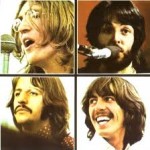Story highlights
- British bands didn’t spur a revolution in American music in the ’60s, researchers say
- They analyzed pop’s evolution through thousands of songs in the Billboard Hot 100
(CNN)–Forget The Beatles and The Rolling Stones, the most important development in pop music in the past half century is hip-hop.
That’s not an opinion, it’s fact — backed up by hard data, says a team of researchers from two London universities.
In a study published Wednesday in the journal Royal Society Open Science, the researchers say they threw out “musical lore and aesthetic judgment” in favor of scientific rigor.
“We had a sense that lots of people have opinions about popular music, but nobody has any objective evidence,” said Armand Leroi, one of the study’s authors.
Opinions vs. evidence
To gather that evidence, they used music recognition technology — similar to what’s in the apps SoundHound and Shazam — to analyze more than 17,000 songs that made up 86% of the U.S. Billboard Hot 100 between 1960 and 2010.
The researchers took 30-second clips of each song and broke them down into topics relating to harmony and timbre, like “major chords without changes” and “guitar, loud, energetic.”
“Everybody thinks the best music was produced when they were 17 years old. We wanted to do something better than that,” Leroi, a professor of evolutionary biology at Imperial College London, told CNN.

Pop music became more diverse, not less
Here are some of the most interesting findings of the study:
• The rise of rap music and related genres appears to be “the single most important event that has shaped the musical structure of the American charts” in the period the research covered.
• Despite talk of a “British invasion,” bands like The Beatles and The Rolling Stones didn’t set off the revolution in American music in 1964. But they did benefit from it and “fanned its flames.”
• The low point for variety was in the early 1980s, when genres like new wave, disco and hard rock dominated.
- Peter Tosh & Mick Jagger in 1978
Books, paintings are next
Leroi said he expects this study — which he worked on with Matthias Mauch from Queen Mary University of London — to be the first of many in an emerging field examining the evolution of different cultures through data.
People are already applying similar methods to digitized books, he said, and paintings are also likely to be fair game through image recognition technology.
“We will be able to reconstruct the history of art and develop a mathematical theory of its evolution, just as scientists have done for the history of life,” Leroi said.
But he acknowledges there are some aspects of culture that the technology can’t reach — at least for now.
“What we can’t do with a computer is understand the meaning of the music to us,” he said.
- James Brown
‘Innovations of funk’
The impact of hip-hop cannot be under-estimated, said music journalist Dorian Lynskey. “It redefines what counts as a pop song and what elements you can use: the rapping on one level takes you away from the need for vocal melodies, while the production on the other is more about loops than chords and sampling.
“Hip-hop us a realization of how James Brown saw music, which is that it’s about the beats and grooves rather than chords and harmonies. It’s the realization of the innovations of funk.”
“Then there are these genre-mixing albums, ‘Screamadelica’ (Primal Scream), ‘Foxbase Alpha’ (St. Etienne) and ‘Blue Lines’ (Massive Attack) which are all empowered by sampling and new technology, and the idea that your record collection can be edited and merged to form something new. Along with ‘Loveless’ by My Bloody Valentine — these albums are not just collections of classic songs, they’re about experiments and expanding the parameters — those records spawned so much.”




